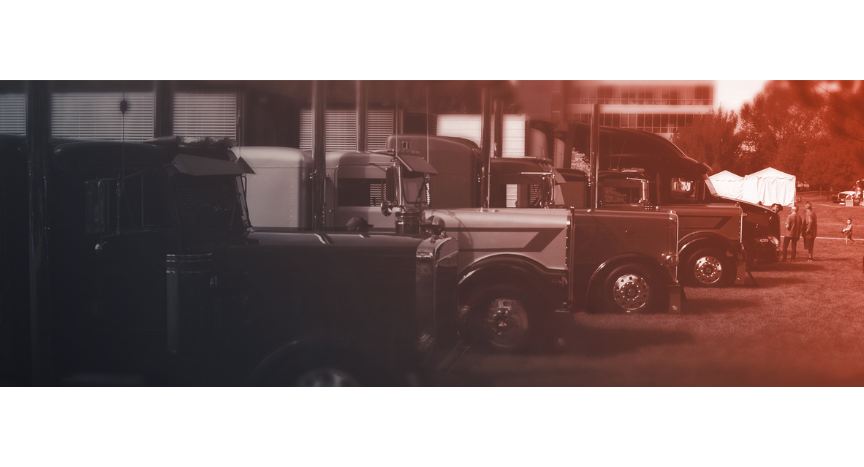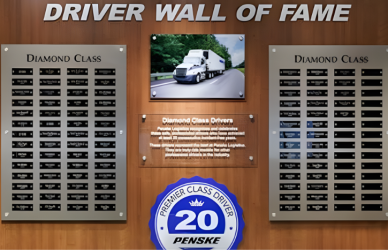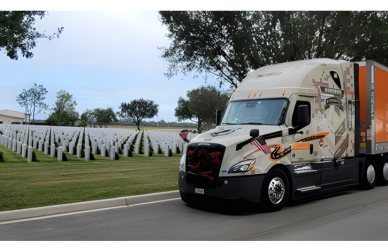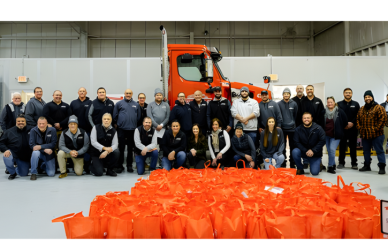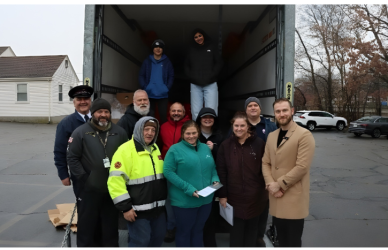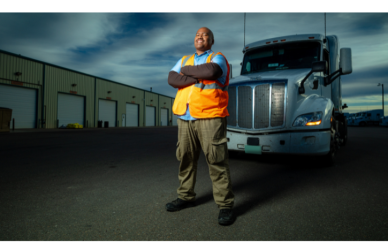If you’ve been driving for a while, you’ve seen firsthand how much trucks have changed, especially when it comes to safety. What used to be a job built on skill and instinct still is—but now, there’s a lot more tech working behind the scenes to help you stay safe.
Today’s rigs are smarter, quicker to respond, and loaded with systems that weren’t even on the radar a few decades ago. Let’s take a look back at where truck safety started, how it’s progressed, and the features making the biggest difference on the road today.
From Brute Force to Basic Protection (1950s–1980s)
In the early days of long-haul trucking, safety features were basic, if they existed at all. Drum brakes, manual transmissions, and little to no crash protection were standard. Air brakes became the industry norm in the ’50s, offering better stopping power than hydraulic brakes, but they still required skill and experience to use effectively.
Seat belts were introduced in the 1960s, but they weren’t mandatory for commercial trucks until the 1970s. Even then, enforcement was spotty. Most safety still relied on the driver’s instincts—and not much else.
The Rise of Engine Braking and Anti-Lock Brakes (1990s)
One of the most important upgrades to safety came with the popularization of Jake Brakes—short for Jacobs Engine Brake. Introduced in the 1960s, they became widespread by the ’90s. These engine brakes gave drivers far better control when descending steep grades, helping prevent brake fade and runaway trucks.
Also in the ’90s, anti-lock braking systems (ABS) became standard on new trucks, helping reduce skids and loss of control during hard stops. ABS helped lay the groundwork for more advanced safety features in the years to come.
Electronic Stability and Rollover Control (2000s)
By the early 2000s, the industry began focusing on crash prevention, not just survival. This is when electronic stability control (ESC) entered the scene. ESC helps keep trucks upright and in control by detecting wheel slippage and automatically adjusting brake pressure to individual wheels.
This was a major step forward in preventing rollovers and jackknifes, especially in wet, icy, or curvy road conditions.
Camera and Sensor-Based Assistance (2010s)
The 2010s saw the rise of camera-based systems, radar sensors, and onboard diagnostics. Suddenly, trucks could “see” what was happening around them. These systems led to:
- Forward collision warnings
- Lane departure alerts
- Adaptive cruise control
- Blind spot monitoring
Many of these features used to be found only in luxury cars. Now, they’re becoming more common in Class 8 trucks.
A study by the Insurance Institute for Highway Safety (IIHS) showed that trucks equipped with forward collision warning and automatic emergency braking had 40–44% fewer rear-end crashes than those without it.
Where We Are Today: Smarter, Safer, Still Driver-Controlled
Modern trucks are rolling safety platforms. Some of the features now considered “standard” in new trucks include:
- Automatic emergency braking (AEB)
- Lane keeping assist
- Tire pressure monitoring systems (TPMS)
- Driver fatigue detection
- Air disc brakes (better stopping power, less fade)
- Telematics that flag unsafe behavior like hard braking or swerving
Yet despite all this tech, safety still comes down to the driver. These systems are here to support—not replace—you.
Why It Matters to Drivers
You’ve got enough to worry about on the road—tight schedules, heavy traffic, unpredictable drivers. Safety tech helps reduce the mental load, allowing you to focus on what you do best.
- AEB and lane alerts help when traffic gets crazy.
- TPMS prevents blowouts before they happen.
- Fatigue monitoring reminds you to take that break before your body gives out.
- Video-based coaching systems help some drivers cut down on habits that increase crash risk.
When used right, these features don’t just save lives—they reduce downtime, lower maintenance costs, and keep you rolling.
The evolution of semi-truck safety hasn’t been about bells and whistles. It’s been about building smarter systems that give drivers more tools to stay in control.
From the first air brakes to today’s radar-based crash prevention systems, the goal has always been the same: get the job done and get home safe.
And while trucks have come a long way, nothing replaces the skill, focus, and judgment of a good driver.


